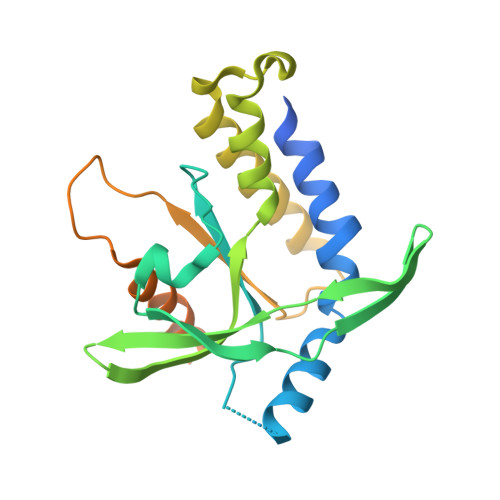STING Polymer Structure Reveals Mechanisms for Activation, Hyperactivation, and Inhibition.
Ergun, S.L., Fernandez, D., Weiss, T.M., Li, L.(2019) Cell 178: 290-301.e10
- PubMed: 31230712
- DOI: https://doi.org/10.1016/j.cell.2019.05.036
- Primary Citation of Related Structures:
6CFF, 6CY7, 6DNK - PubMed Abstract:
How the central innate immune protein, STING, is activated by its ligands remains unknown. Here, using structural biology and biochemistry, we report that the metazoan second messenger 2'3'-cGAMP induces closing of the human STING homodimer and release of the STING C-terminal tail, which exposes a polymerization interface on the STING dimer and leads to the formation of disulfide-linked polymers via cysteine residue 148. Disease-causing hyperactive STING mutations either flank C148 and depend on disulfide formation or reside in the C-terminal tail binding site and cause constitutive C-terminal tail release and polymerization. Finally, bacterial cyclic-di-GMP induces an alternative active STING conformation, activates STING in a cooperative manner, and acts as a partial antagonist of 2'3'-cGAMP signaling. Our insights explain the tight control of STING signaling given varying background activation signals and provide a therapeutic hypothesis for autoimmune syndrome treatment.
Organizational Affiliation:
Department of Biochemistry, Stanford School of Medicine, Stanford University, Stanford, CA 94305, USA.

















